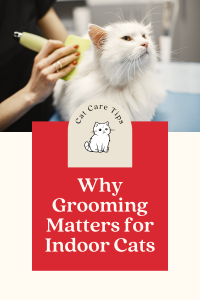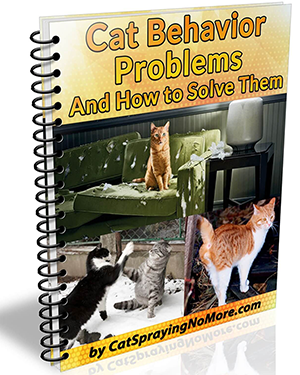Beyond the Bathtub: Why Grooming Matters for Every Indoor Cat

The image of a majestic, wild cat meticulously cleaning its fur is ingrained in our minds. Our domestic felines carry this innate drive for cleanliness, often spending a significant portion of their waking hours meticulously licking, biting, and pawing at their coats. This incredible self-grooming ability sometimes leads cat owners to believe that indoor cats, safe from the elements and outdoor grime, require minimal, if any, human intervention in their grooming routine. However, this couldn’t be further from the truth.
While indoor cats may not encounter the same level of dirt and debris as their outdoor counterparts, the very act of living indoors presents unique grooming challenges that necessitate our attention. Neglecting an indoor cat’s grooming needs can lead to a cascade of problems, impacting not only their appearance but more crucially, their health and comfort. Let’s delve into why grooming is not just a luxury, but a vital component of care for every indoor cat.
1. The Silent Threat: Hairballs and Digestive Health
This is perhaps the most well-known reason why indoor cats need regular grooming. Cats shed continuously, and their barbed tongues, while efficient at removing loose hair, also mean they ingest a significant amount of it. For outdoor cats, some of this hair might be naturally shed or caught on outdoor surfaces. For indoor cats, almost all shed hair ends up in their digestive system.
While occasional hairballs are normal, an excessive accumulation of ingested hair can lead to a range of digestive issues. Large hairballs can cause blockages, leading to vomiting, constipation, reduced appetite, and in severe cases, even require surgical removal. Regular brushing, especially for long-haired breeds or those prone to heavy shedding, helps remove loose hair before it’s swallowed, drastically reducing the risk of hairball formation and promoting a healthier digestive system.
2. Matting: A Painful and Potentially Dangerous Problem
Mats are dense clumps of tangled fur that form when loose, dead hair isn’t removed from the coat. While more common in long-haired breeds, even short-haired cats can develop mats, particularly in high-friction areas like behind the ears, under the legs, or around the hindquarters. For indoor cats, factors like static electricity (common in dry indoor environments) and lack of natural elements (like wind or rough surfaces that might help shed hair) can exacerbate matting.
Mats are incredibly painful. They pull on the cat’s skin, restricting movement and causing discomfort. Beyond the pain, mats can lead to:
- Skin Irritation and Infections: Trapped moisture, dirt, and bacteria beneath mats create a perfect breeding ground for skin infections, hot spots, and parasitic infestations.
- Restricted Blood Flow: Severe, tight mats can even impede circulation to certain areas of the skin.
- Difficulty Grooming Themselves: Once mats form, cats find it even harder to groom themselves, creating a vicious cycle.
Regular brushing and combing prevent mats from forming by removing loose hair before it has a chance to tangle. If mats are already present, professional grooming might be necessary to safely remove them without injuring the cat.
3. Skin and Coat Health: Beyond Just Hair
A cat’s coat is a reflection of its overall health. Regular grooming sessions offer an invaluable opportunity to:
- Distribute Natural Oils: Brushing helps to spread the natural oils produced by your cat’s skin throughout their coat, keeping it healthy, shiny, and waterproof. This natural barrier protects their skin from dryness and irritation.
- Monitor for Skin Issues: During grooming, you can inspect your cat’s skin for any lumps, bumps, sores, rashes, dry patches, fleas, ticks, or other parasites. Early detection of these issues can lead to quicker and more effective treatment.
- Reduce Allergens: For human allergy sufferers, regular brushing can help reduce the amount of dander (dead skin flakes) and loose fur in the environment, potentially easing allergy symptoms.
4. Nail Care: Preventing Pain and Damage
Indoor cats don’t have the same opportunities as outdoor cats to naturally wear down their claws by climbing trees or walking on rough surfaces. As a result, their nails can grow excessively long, leading to:
- Ingrown Nails: The most painful consequence, where the nail curls around and grows into the paw pad, causing severe pain, lameness, and infection.
- Snagging and Tearing: Long nails are more prone to getting caught on carpets, blankets, or furniture, potentially leading to painful tears or broken claws.
- Behavioral Issues: Pain from long nails can make cats irritable, reluctant to jump or play, and can even contribute to litter box avoidance if stepping becomes uncomfortable.
Regular nail trimming (typically every 2-4 weeks) is crucial for indoor cats to prevent these issues.
5. Early Detection of Health Problems
Grooming sessions are more than just cosmetic. They serve as a routine “health check.” By regularly handling your cat and examining their fur and skin, you are more likely to notice subtle changes that could indicate an underlying health issue. This includes:
- Changes in Weight: Feeling ribs or a prominent spine could signal weight loss; difficulty feeling them could indicate weight gain.
- Lumps or Bumps: Any new growths should always be checked by a veterinarian.
- Sore Spots: Your cat might flinch or react to touch in a particular area, indicating pain.
- Unusual Odors: Persistent bad odors from the coat, mouth, or ears can signal infections or other problems.
- Dental Issues: While not direct grooming, it’s an excellent time to peek at their teeth for signs of tartar or gum disease.
6. Behavioral Benefits and Bonding
Grooming can be a deeply bonding experience for you and your cat. Regular, gentle grooming sessions, especially if introduced early and positively reinforced with treats and praise, can strengthen your relationship. For some cats, grooming is incredibly soothing.
Furthermore, proper grooming can prevent behavioral issues. Cats that are uncomfortable due to mats or painful nails may become irritable, aggressive, or withdrawn. By addressing these physical discomforts, you contribute to a happier, more well-adjusted cat.
Conclusion: A Commitment to Well-being
In conclusion, the notion that indoor cats are exempt from regular grooming is a misconception. From preventing painful mats and dangerous hairballs to ensuring healthy skin and allowing for early detection of health issues, grooming is an indispensable part of responsible cat ownership. It’s an act of love that contributes significantly to your indoor cat’s comfort, health, and longevity, ensuring they continue to purr contentedly for years to come. So, grab that brush, gentle clippers, and embark on a regular grooming routine – your cherished feline companion will thank you for it.

Leave a Reply